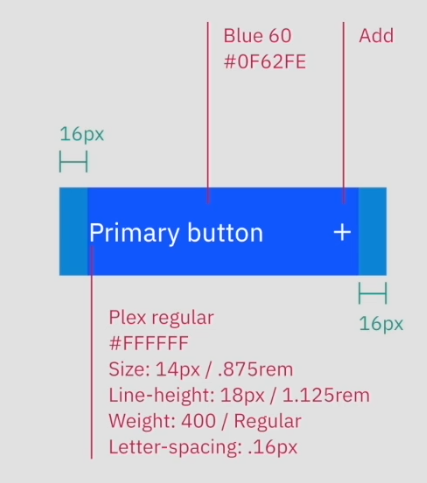- Published on
Design Systems
Intro Design Systems
At their core, design systems are comprehensive, interconnected sets of design standards, principles, and tools that allow a company's digital product lines to be developed and managed more cohesively and efficiently. They encompass a spectrum of resources, ranging from
Style guides: Style guides are the rules that govern how a product or brand should be designed. They help define the brand identity and message, and can be used to create a consistent visual language across different products and platforms.Documentation: Documentation describes how the components and patterns should be used, the principles guiding the system's design, the system's architecture, and coding standards. The documentation is a critical tool for ensuring that all designers, developers, and stakeholders understand and adhere to the system's standards.Visual assets: Visual assets are the graphical elements used in a product or brand, such as logos, icons, illustrations, and photographs. Visual assets help communicate the brand identity and message, and can be used to create a consistent visual language across different products and platforms.Design patterns: Design patterns are reusable solutions to common design problems. They can be used to solve a specific design problem, such as how to display a list of items, or to create a consistent user experience across different products and platforms.Design principles: Design principles are the fundamental ideas that guide the design of a product or brand. They help define the brand identity and message, and can be used to create a consistent visual language across different products and platforms.Design guidelines: Design guidelines are the rules that govern how a product or brand should be designed. They help define the brand identity and message, and can be used to create a consistent visual language across different products and platforms.
Anatomy of a Design System
Visual consistency refers to the uniformity of visual elements across a product's user interface. It provides a sense of familiarity and ease for the users, contributing to a seamless, intuitive, and satisfying user experience. Below are the primary elements that constitute visual consistency:
ColorTypographyIconographySpacingLayoutImagery
The strategic selection and consistent application of typefaces not only enhance aesthetics but also readability and accessibility, all of which contribute to an efficient and engaging user experience.
TypographyFont FamilyFont SizeFont WeightFont StyleLine HeightLetter SpacingText AlignmentText DecorationText TransformText ColorText Accessibility
It plays a pivotal role in guiding a user's attention, defining element hierarchy, enhancing readability, and achieving visual harmony.
Spacing in a design system refers to the strategic and consistent application of space around and between elements. While subtle, it can significantly impact a user's interaction with a product by influencing the product's readability, aesthetics, and overall user experience. Here are the key facets of spacing:
SpacingSpacing UnitsSpacing UsageSpacing AccessibilityLayoutLayout GridLayout UsageLayout Accessibility

The strength of an advanced design system is often measured by its ability to adapt and grow. Scalability, thus, plays a key role in ensuring the system's longevity and flexibility. It is not just about accommodating more users or bigger data, but also about handling diverse use cases, technological evolution, and changes in design trends.
Scalability
Scalability in a design system relates to its capacity to expand or evolve while maintaining its functionality, consistency, and performance. It enables a design system to cater to the changing needs of a growing product, user base, or organization. Key aspects of scalable design systems include:
- Reusability: The principle of reusability is at the heart of scalability. By creating reusable components, a design system can effectively support multiple projects, screens, or platforms without having to recreate elements from scratch. This not only saves time and resources but also ensures consistency across different parts of a product or brand.
- Modularity: A scalable design system is built on the concept of modularity. It breaks down complex interfaces into manageable, independent modules that can be mixed, matched, and reused across different parts of the product. This modular approach allows the system to easily accommodate new features or changes without disrupting existing components.
- Adaptability: A scalable design system is adaptable, meaning it can cater to a variety of screen sizes, platforms, and devices without compromising the user experience. This adaptability is particularly critical in an era of diverse digital devices, from smartwatches to massive 4K screens.
- Standardization: A scalable design system relies on standardization to maintain consistency while growing. This involves establishing and adhering to a set of design and coding standards, which guide the creation, usage, and modification of the design system's components.
- Future-proofing: A truly scalable design system anticipates and accommodates future needs. This might involve creating components that are yet to be used, designing for upcoming technology trends, or making provision for easy updates and modifications.
The Impact of Scalability on a Design System
The scalability of a design system significantly impacts the longevity, flexibility, and usability of the system.
- Longevity: By being scalable, a design system can adapt and evolve along with the product, user needs, and technology trends, ensuring its relevance and utility over time.
- Flexibility: A scalable design system is flexible enough to accommodate diverse use cases, changes, or new features without breaking or requiring a major overhaul.
- Usability: Scalability enhances the usability of a design system by ensuring that the system works effectively across different platforms, devices, and screen sizes, providing a consistent, satisfying user experience.
In essence, scalability transforms a design system from a static set of guidelines into a dynamic, adaptable toolset. It ensures that the system can grow, evolve, and adapt, delivering consistent, high-quality user experiences over time and across a variety of contexts.
Overall a Design System should be able to provide:
CollaborationAccessibilityUsabilityMaintainabilityReusabilityPerformanceAvailability